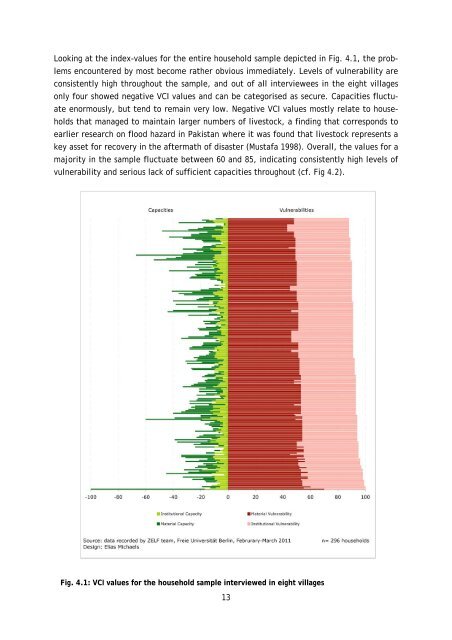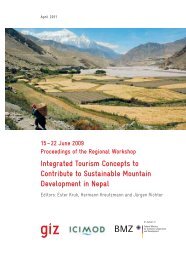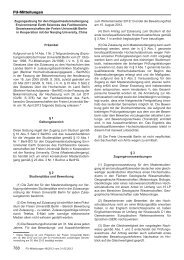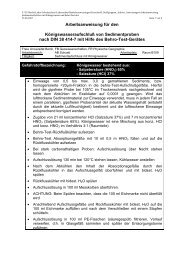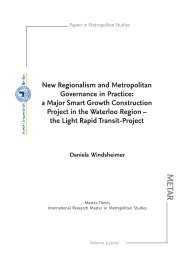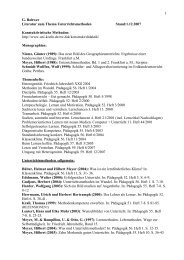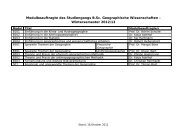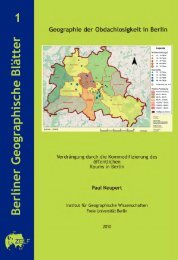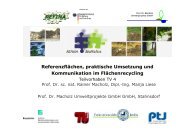After the Flood in Pakistan 38 Berlin Geographical Papers - Freie ...
After the Flood in Pakistan 38 Berlin Geographical Papers - Freie ...
After the Flood in Pakistan 38 Berlin Geographical Papers - Freie ...
You also want an ePaper? Increase the reach of your titles
YUMPU automatically turns print PDFs into web optimized ePapers that Google loves.
Look<strong>in</strong>g at <strong>the</strong> <strong>in</strong>dex-values for <strong>the</strong> entire household sample depicted <strong>in</strong> Fig. 4.1, <strong>the</strong> problems<br />
encountered by most become ra<strong>the</strong>r obvious immediately. Levels of vulnerability are<br />
consistently high throughout <strong>the</strong> sample, and out of all <strong>in</strong>terviewees <strong>in</strong> <strong>the</strong> eight villages<br />
only four showed negative VCI values and can be categorised as secure. Capacities fluctuate<br />
enormously, but tend to rema<strong>in</strong> very low. Negative VCI values mostly relate to households<br />
that managed to ma<strong>in</strong>ta<strong>in</strong> larger numbers of livestock, a f<strong>in</strong>d<strong>in</strong>g that corresponds to<br />
earlier research on flood hazard <strong>in</strong> <strong>Pakistan</strong> where it was found that livestock represents a<br />
key asset for recovery <strong>in</strong> <strong>the</strong> aftermath of disaster (Mustafa 1998). Overall, <strong>the</strong> values for a<br />
majority <strong>in</strong> <strong>the</strong> sample fluctuate between 60 and 85, <strong>in</strong>dicat<strong>in</strong>g consistently high levels of<br />
vulnerability and serious lack of sufficient capacities throughout (cf. Fig 4.2).<br />
Fig. 4.1: VCI values for <strong>the</strong> household sample <strong>in</strong>terviewed <strong>in</strong> eight villages<br />
13


